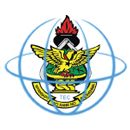Background
An increasing quantity of solar photovoltaic (PV) systems are being installed in many countries around the world in both grid-tied and stand-alone applications. These PV modules need to be evaluated to ensure that the procured modules will: meet the safety requirements (both electrical and mechanical), meet the nameplate rating requirements (rating tolerance shall be minimum) and be reliable and durable (at least 20 years).
Since the module are procured based on the “$/watt” as per the nameplate rating, ensuring the accuracy of the nameplate rating is very critical. The lifetime of PV modules are dictated by the failure modes and degradation rates. Three of the major failure/degradation modes in the Ghana-like climatic conditions are: solder-joint degradations/failure mode; encapsulant browning; high potential and high relative humidity/rain related degradation.
Project Objectives
This research project aims (inter alia) to:
- To determine the solder joint degradation effect on the performance and efficiency of the PV module installed in the sub-Sahara region.
- To verify and validate the annual power degradation rate of 0.5 to 10%.
- To study the effect of the zoned climatic and weather conditions of the Sub-Sahara on the degradation.
- To investigate the solder joint degradation effect on the first generation and second generation PV modules and to established their module reliability under the Sub-Sahara climatic and weather conditions.
- To use data and results from both on-field and off-field study to model solder joint degradation relationship with or its direct effect on PV module degradation and the annual degradation of the PV system.
- Evaluation of interconnect designs and geometry for their impact on solder joint degradation.
- Determination of number of cycles for solder joints of PV module under stimulated climatic/weather conditions of selected regions.
- Evaluate the possible effect of the PV module degradation due to the solder joint degradation on the payback time and calculation of risk of investment of PV systems.
- Establish a comparative effect of Global and Local mismatch of CTE on the solder degradation on the PV module degradation and efficiency in the sub-region.
Key Activities
- Training at PV Reliability Laboratory (PRL) at Arizona State University
- Establishment of PV Screening laboratory
- On-field Study
- Off-field (Laboratory)
- Historical field data collection of already existing systems (Guinea & Sudan Savannah, Rainforest and Coastal Savannah climate zones).
- Physical examination of module joints, Surface imaging and characterization of solder joints and measuring of series resistance of PV modules.
- Experimental set-up of commercially available solar PV module in the local markets to study the interconnect degradation of a period of time.
- To provide real-time, continuous measured data on the degradation of the interconnection of PV modules (set-up of a three set of solar PV modules at each of the three sectioned region of Ghana).
- Various commercial PV modules will be subjected to various accelerated life testing (ALT) involving
- thermal cycling conditions. Conditions for stimulation will be based on recorded weather conditions from the locations in the selected regions.
Budget
US$171,419
Equipment Expected
- I-V Curve tracer
- Radiometer
- Wet resistance tester
- Reference Cells
- Infrared Camera
- Electroluminescence Camera
- By-pass diode tester
- Reference Cells
- Data Acquisition System
- Mesh Screens to Change Irradiance levels
- Cooling accessory to change module temp.
- Thermal Cycling Chamber
- Potential Induced Degradation Test set-up
Funding
USAID through US National Academy of Sciences (Sub-Grant no. 2000004829)
Coordinator
(Principal Investigator) – Dr Gabriel Takyi (gabrieltakyi@yahoo.co.uk)
Timelines
September 1, 2014 - August 31, 2017
